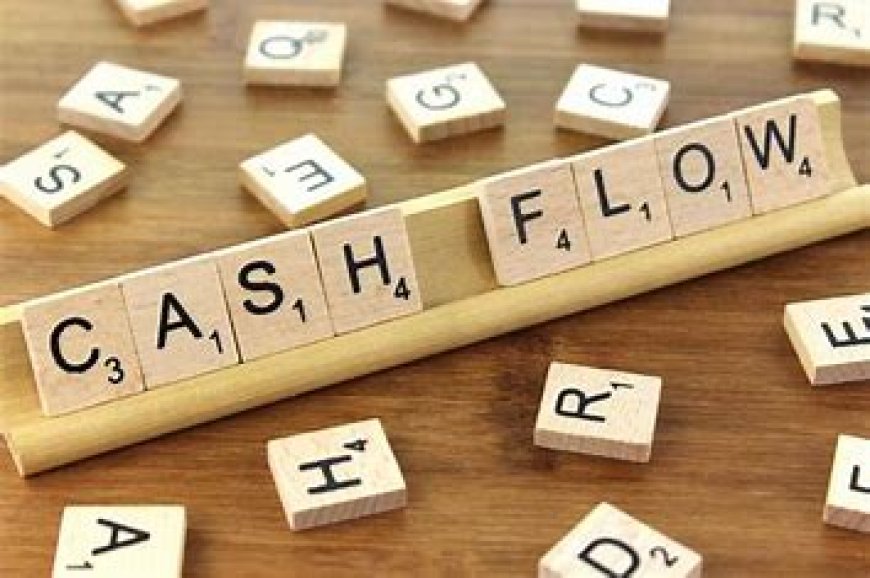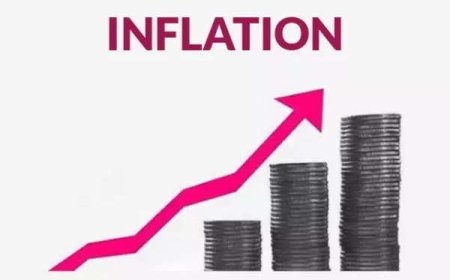Introduction to Cash Flow for kids & adults

INTRODUCTION:
Cash flow refers to the movement of money in and out of your bank account. It shows how money comes into your account and how it goes out. Just like how water flows through a pipe, cash flow shows how money flows through your finances.
Cash Inflows:
Cash inflows are the sources of money that come into your bank account. These can include:
Salary: The money you earn from your job.
Business Income: If you have your own business, it's the money you earn from selling products or providing services.
Rental Income: If you have a property that you rent out, it's the money you receive as rent.
Investments: The money you receive from investments such as dividends, interest, or capital gains.
Cash Outflows:
Cash outflows are the ways money goes out of your bank account. These can include:
Expenses: The money you spend on things like groceries, rent, utilities (like electricity and water bills), transportation, and entertainment.
Loan Payments: If you have taken a loan, it's the money you pay back each month to the bank or lender.
Taxes: The money you pay to the government as income tax, property tax, or goods and services tax (GST).
Savings and Investments: The money you set aside for savings or invest in stocks, mutual funds, or other assets.
Net Cash Flow:
The net cash flow is the difference between your cash inflows and cash outflows. It shows whether you have more money coming into your bank account or going out.
Positive Cash Flow: If your cash inflows are greater than your cash outflows, you have a positive cash flow. It means you have more money coming in than going out, which is generally a good thing as it allows you to save, invest, and build financial security.
Negative Cash Flow: If your cash outflows are greater than your cash inflows, you have a negative cash flow. It means you are spending more money than you have coming in, which can lead to financial difficulties if not managed carefully. It's important to reduce expenses, increase income, or make adjustments to improve your cash flow.
Understanding cash flow helps you manage your money effectively, make informed financial decisions, and plan for the future. It allows you to see how much money you have available for expenses, savings, and investments. By monitoring your cash flow, you can ensure that you have enough money to meet your needs, pay your bills on time, and work towards your financial goals.
Examples for Kids:
Pocket Money:
Imagine you receive a weekly allowance of Rs. 100 from your parents. If you spend Rs. 50 on chocolates and save the remaining Rs. 50 in your piggy bank, your cash flow shows that Rs. 100 came in as inflow (allowance) and Rs. 50 went out as outflow (spending), resulting in Rs. 50 saved.
Birthday Gifts:
Let's say you receive Rs. 500 as gifts on your birthday. If you decide to buy a toy for Rs. 200 and put the remaining Rs. 300 in your savings jar, your cash flow shows that Rs. 500 came in as inflow (birthday gifts) and Rs. 200 went out as outflow (spending), resulting in Rs. 300 saved.
Selling Toys:
If you sell some of your old toys to your friends and earn Rs. 200, and then use that money to buy a new book for Rs. 150, your cash flow shows that Rs. 200 came in as inflow (selling toys) and Rs. 150 went out as outflow (buying a book), resulting in Rs. 50 remaining.
Lemonade Stand:
Suppose you set up a lemonade stand during summer and earn Rs. 100 by selling lemonade. If you spend Rs. 30 to buy more lemons and cups for the next day, your cash flow shows that Rs. 100 came in as inflow (lemonade sales) and Rs. 30 went out as outflow (lemonade stand expenses), resulting in Rs. 70 remaining.
Savings Goals:
Let's say you set a goal to save Rs. 500 to buy a new bicycle. Each week, you save Rs. 20 from your pocket money and deposit it into your savings box. Your cash flow shows that Rs. 20 came in as inflow (savings) each week, contributing towards your goal of saving Rs. 500.
Examples for Layman Adults:
Salary and Expenses:
Consider you receive a monthly salary of Rs. 50,000. If you spend Rs. 30,000 on rent, groceries, bills, and other expenses, your cash flow shows that Rs. 50,000 came in as inflow (salary) and Rs. 30,000 went out as outflow (expenses), resulting in Rs. 20,000 remaining.
Business Income and Costs:
If you have a small business selling homemade products and earn Rs. 10,000 from sales in a month, and you spend Rs. 5,000 on raw materials and packaging, your cash flow shows that Rs. 10,000 came in as inflow (business income) and Rs. 5,000 went out as outflow (business costs), resulting in Rs. 5,000 remaining.
Rent and Savings:
Consider you earn Rs. 40,000 per month from renting out a property you own. If you save Rs. 10,000 from the rental income and use the remaining Rs. 30,000 for personal expenses, your cash flow shows that Rs. 40,000 came in as inflow (rental income), Rs. 10,000 went out as outflow (savings), and Rs. 30,000 went out as outflow (expenses).
Cash flow is the movement of money into and out of our bank accounts, and it plays a crucial role in our financial lives. In simple terms, it's like the way money flows in and out, just as water flows through a pipe. In an Indian context, cash flow helps us understand how money comes in from sources like salaries, business income, or investments, and how it goes out for expenses, bills, loans, and savings. By tracking our cash flow, we can make sure we have enough money to cover our expenses, save for the future, and make informed financial decisions. It helps individuals and businesses manage their finances effectively, plan for their goals, and maintain a healthy financial position in India.
What's Your Reaction?
 Like
0
Like
0
 Dislike
0
Dislike
0
 Love
0
Love
0
 Funny
0
Funny
0
 Angry
0
Angry
0
 Sad
0
Sad
0
 Wow
0
Wow
0









































































